CITED: Zaynab Issa
On her new cookbook, striking the perfect balance, good taste and authenticity.
About two years ago, in a small café in Amsterdam, I ate a life-changing piece of cake. I thought about that cake often, but with time, the details slipped from my memory. I was desperate to recreate it. My process began with research of course, digging through my camera roll for any photographic evidence I could uncover. Then, I tried to look up the cafe online, hoping to find the cake on their menu, maybe even a description that would lead me closer. When that didn’t work, I messaged them on Instagram, hoping they could give me an answer, maybe even the recipe. They eventually got back to me and confirmed my memory: it was indeed a coconut cardamom cake, but they couldn’t share the recipe. So, I turned to Google. I found the perfect recipe and used it countless times. The cake became a household staple for us. Paired with chai, brought to family functions, and shared with friends.
A little over a year ago, my parents visited me in New York, and we took them to Little Flower for brunch. That day, they had a special hot drink on the menu, a mix between hot chocolate and chai complete with a halal marshmallow, a collab with a local food creator. Everyone in my family raved about how good it was.
Two Ramadans ago, I was invited to an iftar at Huda, a local Brooklyn spot we frequent. The event was hosted by WhatsApp, Ahmad Tea, and Zaynab Issa, a New York-based recipe developer. It was only later that I connected the dots: the coconut cardamom cake I had obsessed over, the chocolatey chai my family loved, it had been her! Long before we met, Zaynab’s recipes had found their way into my life.
Through her recipes shared on Instagram, TikTok, Bon Appétit, The New York Times, and Substack, to name a few, Zaynab has created for people across the world. Her food, like a bridge, connecting flavours and cultures, carrying nostalgia across oceans, bringing warmth to kitchens far beyond her own. I think about how many others unknowingly welcomed her into their homes before ever knowing her. How many people have reached for her recipes in an attempt to recreate a memory, a taste of home, or something entirely new?
Now, with the release of her first book, Third Culture Cooking, it feels like a full-circle moment. What was once a by-chance connection has turned into a proper friendship, one built over shared meals, beginning with that first night. Since then, Zaynab and her husband, Mikhail, have become great friends of ours, and I have no doubt that her food will continue to find its way into homes, onto tables, and into memories just as it did for me. I can’t wait for others to experience her cooking through this book, and I highly encourage you to get a copy for yourself.
I meet Zaynab at the Union Square Greenmarket early one morning before heading into the office. She tells me Wednesdays are the best day for “industry” folks, quieter too as vendors prepare for weekend crowds. The last time I saw her was at a sehri party she and Mikhail hosted at their Brooklyn home. There are only a few days left in Ramadan now and about a week until her book launch. She’s slammed, juggling promotion, interviews, Eid prep, and finalizing details for her book tour. But for a few hours, we walk through the market, picking up fresh veggies and fruits, gushing over a rainbow of ranunculus, and end our morning browsing the cookbook section at a bookstore.
MA: For those who don't know, how did you become a recipe developer? How did this all start?
ZI: It all started with my art minor. The thesis project was to create a zine. It was actually to create anything for a graphic design course, any creative expression of the political climate in the U.S. That was 2020, and it was similar to now, very polarized. I thought about the country and what that meant for society. Division is never going to create strength, in my opinion. And so I thought about the best way to get to know people and understand our inherent similarities and that is through food.
My family is Koja, which is... I always have a hard time describing it. Is it an ethnic group? Kind of. But my family is Khoja. A lot of the Koja food I grew up with was undocumented. It still is. There are only a few people documenting it, though social media has changed things a lot. That made me want to document my family's recipes.
I worked with the Food & Beverage director at The Wing, which was the membership club I was a part of during college. She helped me turn them into real recipes, editing them, refining them, and even crossing out a few. That was my first foray into traditional recipe development. Because I had published printed material from that zine, it got me into the food media world specifically. At the same time, I was posting on TikTok, what I was cooking and recipes I was making for myself. Through the pandemic, I was doing that really regularly. So, I think the two in tandem created the hybrid that is my career now, part old-media recipe developer, part content creator. I straddle a lot of in-betweens in a lot of different ways.
MA: What would those be, in your opinion?
ZI: Definitely the new media vs. old media juxtaposition. I think both have so much to offer that I can't let go of either. They reach different audiences. I don’t know how many seasoned cooks look to social media for their recipe inspiration, and I don’t know how many young people getting into the kitchen are paying for content behind a paywall or buying a cookbook. Both audiences are valuable. I want experienced cooks to be making my recipes, but I also want to encourage people unfamiliar with cooking to get into the kitchen. Reaching both is really important to me, which is why I won’t stop doing either.
They function so differently, one is very self-guided, the other is incredibly collaborative. One moves fast, the other is much slower. But because they both develop the same skill, I think it’s worth pursuing both. I also hate the idea that print media is dead. I always say, Print is back, print is back! and I truly believe it. I don’t think it’ll ever really die. There's something sensory about interacting with physical pages, it creates a more immersive experience.
MA: Yeah, exactly. The experience feels much more lived in a way that scrolling for a recipe doesn’t.
ZI: Yes! Even when I'm cooking for a dinner party, I want to print the recipes. I want to shuffle through them, and let the pages get dirty. I don’t want my screen to get messy while I cook. There’s something about using printed matter that makes me feel present, like I’m really living in the tangible world. That’s something old media offers that I don’t think can be replaced.
MA: Would you say that dynamic has flipped? Traditional media used to be overwhelming, but now it feels more refined, while social media is chaotic and hard to break through. Yet, you've done that successfully and brought it full circle to traditional media.
ZI: Both are still true. Some publications have cut back and become more concise, making their content even more valuable. But there’s noise in all media. There will always be content created just for the sake of creating. On social media, it’s obvious because of how much time we spend consuming it. With books, it’s harder to feel overwhelmed by noise, even though, like we’re sitting in a bookstore now, there are just as many books as there are posts on social media. But books still feel grounding.
I feel similarly about Substack. There’s more context required to create a meaningful piece of content there. On Instagram, content has such a short lifespan, even if you spent ages creating something, people may only engage with it for a few seconds. In print, the impression, no pun intended, is much more lasting.
You’ve navigated this shift well. You started with Instagram, moved to TikTok in its early days, and now you're using Substack. What helped you do that without getting caught up in algorithms and trends?
ZI: This is easier said than done, and I fall into the trap myself, but you just have to do it. I recently reposted one of my oldest, most successful videos. It’s a cringy piece of content. My videos now would never look like that. But I posted it anyway. The substance was there. The recipe is still fantastic. So even if I don’t love the production anymore, it still has value.
MA: So you think you had to go through that to get where you are now?
ZI: Absolutely. The embarrassment is going to be there. That old video still embarrasses me, but I made it, and it reached people because the content was valuable.
We also need to stop obsessing over reach. Even if you're only reaching 50 people, if those 50 are engaged, that’s powerful. Imagine 50 people in a room listening to you. That’s a lot of people who care about what you have to say. Substack is great for this. I subscribed to about 25 newsletters when I first joined, but now I’m cutting down to the ones that really grab my attention. There’s only so much time in the day to interact with content.
Once you stop chasing more people and start reaching your people, everything gets better.
MA: Okay. Let's talk a little bit about the third culture experience. We've talked about you traversing the line between two worlds constantly. Where does the third culture experience come from for you?
ZI: I think being a third culture kid is the entirety of my identity.
MA: What does that mean? For anyone that doesn't know, what is a third culture?
ZI: So a third culture kid is someone who's grown up in an environment different from the culture of their parents. Naturally, you end up absorbing both the culture of your parents and the culture of the place you're in, and what it results in is an entirely new culture that's unique to you. I think this applies to a lot of kids, whether they realize it or not, and even to immigrant families in general. Even if your immigration isn't recent, it still applies because, with how easy it is to interact with different cultures now, we've all become so influenced by them. Recognizing that, yes, it's unique to you, but it's also influenced by other things, is so important for self-actualization.
I think understanding that you're a mix and recognizing what those influences are is key. For me, it's New Jersey. It's Queens. It's East Africa. It's India. Every facet of my life is so informed by these cultures and the mixing of them. Even my American experience is a third culture experience because a New Jersey and Queens experience are totally different. Suburban New Jersey and Queens? Not even kind of the same. East Africa and India? Also not the same. The mixing of all of this has shaped everything about me, even the way I interact with media and create content. I think that’s interesting. I'm so used to not engaging with just one thing entirely, and that informs how I make things.
MA: You walk the line and make your own path.
ZI: Yeah. And you just have to do it. That’s another way to make social media yours. If you're always paying attention to what other people are doing, you're never going to create something new. It’s not like everyone was putting out carrot cake videos when I made mine. Nobody was doing that, but then people saw it and were like, "Oh, I guess I'll make carrot cake now." If you’re following a trend, you're never creating it. And if you’re too obsessed with how other people are creating, your own work will always feel one step removed from authentic because it’s too inspired.
MA: You mentioned authenticity, how do you approach— I don’t want to use the word modernizing, but for the sake of our conversation, I will—or remixing traditional dishes while still honoring them?
ZI: I think that's where storytelling and the headnote of the recipe are super important. That part of a recipe exists for a reason, so we should use it to contextualize.
MA: I’m pro-context. I want to know the story. I want a narrative.
ZI: Exactly. We have the space for that in a recipe, so we should put it there. I think modernizing and riffing on a dish is authentic. Me making a recipe my grandma made is already not the same as her making it. That wasn't my lived experience. I didn’t have kukupaka on the beach. That was her life.
MA: So if you had done it "authentically,", it actually wouldn’t be authentic at all.
ZI: Yes, exactly. The modernization feels more authentic to me and my lived experience, which is why I call it third culture cooking. It’s its own thing. Fusion food would be an accurate way to describe it, but that term has such a horrible connotation now because it was misused and abused. It often feels devoid of context. But once there’s a why, it suddenly makes sense.
MA: And your third culture cooking is that why, it’s that definition.
ZI: Yeah, exactly. I have entirely nostalgic recipes, like a fish filet that has no twist on it. It’s tartar sauce, crispy fish, American cheese, brioche bun, no masala or anything. But it’s a recipe I feel attached to and feel like I have the authority to create because it’s such a big part of my interaction with food. I have a deep nostalgic connection to a fish filet because, as someone who eats halal, it's one of the only fast food items I could get. That dish takes deep root in my heart the same way my mom’s meat curry does. Actually, that dish is reimagined in the book as a short rib dish! You had that!
MA: Yeah, it was wonderful! That’s the one dish I’m like, "I want to ask her for the recipe," but I also want to wait until I get your cookbook in the mail. That’ll be the meal I cook in celebration of your release!
ZI: Aww, nice!
MA: In our conversations as friends, we talk a lot about intention and authenticity when it comes to style, taste, and the things we create. What would you say are the aspects of your life that greatly impact these tastes?
ZI: Definitely my mom’s taste, it’s extremely…unique. I don’t know if I should say this, but I’m not obsessed with her taste. But I recognize how specific it is to her and her lived experience, and that guides me. Same with my siblings, barring my brother…that guy needs to figure it out, my sisters, they both have very specific tastes that influence me a lot too. I’ve seen women being themselves so much in my life that I can’t imagine doing anything else. And I think, what’s the goal? To be liked or to elicit a response? I think that really tells you a lot about a person. What they’re trying to accomplish.
MA: You can recognize the people pleaser right away.
ZI: Yeah! I don’t want to generalize, but if you’re obsessing over trends, you might be obsessing over looking current. And then I ask, what are you trying to communicate with that? That you’re in the know? But "in the know" could mean something entirely different if you just decided it would be. It doesn’t have to be what Stacy’s "in the know" is.
MA: It’s yours.
ZI: Exactly. You can know something that someone else doesn’t, and you’re still in the know. Once you have that epiphany—"If I’m being completely myself, it will generate the same curiosity and response I’m looking for by following a trend"—it shifts things. People will be curious.
MA: Because you’re doing it your way.
ZI: Yeah. If someone recognizes something too fast, it’s not interesting. So while you’re trying to be interesting by showing you’re in the know, you might actually be doing yourself a disservice. Like, if I see someone with a bag charm, I’m like, "Yeah, okay, she’s on the Internet. We have a similar algorithm." But if I see someone doing something I’ve never seen before, I’m immediately more interested. That’s why I ask, what’s the goal? If it’s to be liked, then yeah, pick a trend. We know people like them, that’s why they’re trends. But if it’s to be interesting, then being yourself is the most interesting thing. That’s always my approach. Even if people are like, "What the hell is she doing?"
MA: They’ll catch up eventually.
ZI: Yeah, and maybe they won’t and that’s fine. Because it’s yours. You know what I mean?
MA: You touched on the role that women play in your taste, as we've talked about. You also mentioned to me in conversation before the impact that women in your life have had on your cookbook and your cooking in general. What's one lesson beyond the food itself that you carry from their kitchen into yours?
ZI: That's a great question. I think it's to care. There's nothing nonchalant about making a meal. The idea of an effortless host is kind of boring to me. You know what I mean? Yeah, there are times to be effortless, but to create effortless also takes a lot of previous effort. The experience can be effortless, and that's a totally fine way to interact, but to get to effortless, there's a lot of effort. And they are never trying to be effortless. I'm like, "It's okay, we can use plastic plates." They're like, "No." And I hate that and love it at the same time. They're being extra, and they're proud of it. It's the only way they want to do something. That level of care and consideration is a lesson I could probably learn.
MA: I love that. Have they reacted? Do they know the role they played in this book? Have they seen it yet?
ZI: They have. So funny. I showed them. There are ten recipes in the book that are direct recipes from the women who taught me to love food and who continue to feed me to this day. Each of their headnotes contextualizes their lives, not just the dish. My interaction with them is just a small part of their much bigger lives, but I wanted to note the place they hold in my life and heart. I showed my mom hers. I wrote hers last. It was tricky to write because my relationship with my mom is complex. With all the women in my life, besides my sisters, it's not just "I'm obsessed." Any real, authentic relationship that challenges you and pushes you to grow isn’t all rainbows and butterflies. My mom and I have a relationship that has challenged me the most, and I have so much respect and admiration for her. But it's not an easy relationship to hold.
The dish I happen to love the most from my mom's cooking is actually a dish I really did not like growing up, which felt very aligned with how I felt about her. I was a daddy’s girl through and through. It’s cringy to think about how I so actively preferred one parent over the other. But as soon as I got married, my respect for my mom skyrocketed. It was like, "Okay, you've been doing this for so long." I used that space to talk about my relationship with her, and she read it. She just said, "That was nice" and closed the book. And we never talked about it more. I was just like, "Okay."
MA: I can perfectly picture that response. I totally understand.
ZI: No one else outside of my mom has properly seen the book yet. Well, Mikhail has.
MA: Okay, let's shift to talking about the actual book. If your book were a scene, what would that scene be?
ZI: It would definitely be me and my entire immediate family, my two sisters, my younger brother, my mom, and my dad, sitting at the round table with one of my mom's questionably ugly tablecloths. I think we picked one of the ugly ones for the book too. It's not ugly, it’s just so specific. You know what I mean? Her taste is literally an acquired taste. That’s the best way to describe it. There would be a burgundy and gold brocade tablecloth with those cork-filled placemats. You know the ones I'm talking about? They're still her placemats. They're brown with a fruit motif. We’d be sitting there, a full dinner laid out, just talking. It would be all of us at the dinner table, or it would just be me and my siblings in the kitchen, at the island, everyone making their own thing. Elio’s pizza in the toaster, spinach artichoke dip in the microwave, mac and cheese or ramen on the stove. My strongest food memories are the four of us in the kitchen eating.
MA: I'm sure you’ve planned the cookbook in a specific way and want people to interact with it that way. But if there were an alternative, one place you want them to go first or a recipe you want them to try first, what would that be?
ZI: In my house, we didn’t have a plethora of cookbooks, there were just a few, and they did heavy lifting. The American cookbook we had was the Betty Crocker Cookbook, which covered everything, banana bread, Thanksgiving turkey, you name it. I wanted my book to feel similar because I know some people buying it might never have felt called to a cookbook before, and I wanted them to feel like they were getting a lot out of it, not just one thing.
So it’s tricky for me to pick one recipe. I actually laid out the recipes based on mood and time in the book, so it’s easy to match where you are with what you want to eat. Time and intention are so important to executing a recipe well. Besides reading the recipe—always read the recipe! I hate when people don’t read the recipe! It’s a written piece of material. Read it. But also, knowing, "Hey, I’m really tired, so maybe don’t take on a two-hour recipe." You know what I mean?
MA: Have you ever had a failed recipe that ended up turning into something even better than what you originally planned?
ZI: That's a great one. Yes. The sticky banana cake with tahini fudge in the book was originally supposed to be a tahini banana bread with chocolate chips in it because I always love chocolate chips in banana bread. Then I was thinking about the caramel apple snacking cake I did for BA, and I thought, why not try a banana snacking cake? Instead of a caramel glaze, I'll do a chocolate glaze and add tahini. The flavours ended up coming through more organically because tahini, being a nut paste, draws out moisture, and that's key in banana bread or cakes – they’re typically moist and spongy. The nuts and sesame seeds soaked up too much moisture, making it too bready. But this version has a nice, bouncy, fluffy cake with a rich, delicious glaze.
MA: What's the most underrated spice or ingredient that people should be using?
ZI: My mind immediately goes to two things: a unique chilli powder like Kashmiri chilli powder or Aleppo chilli flakes. These are versatile, like pepper. You can use them the way you’d use salt and pepper, on almost anything. For instance, buttered noodles with chilli powder and salt are a game-changer. The other is pomegranate molasses. It’s tangy, salty, sweet, and slightly bitter. Its concentrated flavour means you can use it in so many ways, like in salad dressings, soups, or as a glaze on grilled food. If I had to pick one, it would be Aleppo chilli flakes.
MA: I see a lot of similarity in how you approach food and how you approach fashion, you think about textures, colours, and visual interest. Can you talk about that? And if you had to design a capsule collection inspired by your recipes, what would it look like in terms of colours, textures, and silhouettes?
ZI: I love both of these questions. I discuss this in the book, my visual philosophy for recipes applies to many parts of my life. Texture and colour contrast are really important for visual interest. There are so many layers in a recipe: the vessel, the food itself, garnish, finishers. All these elements play into creating visual interest, just like with fashion. You can make the same dish look completely different depending on how you style it, similar to how two people can wear the same clothes but make them look different based on their styling. Beauty is subjective, and I think we get caught up in trends because they remove that subjectivity. It's nice when people like your outfit, but the goal is always to create something interesting. I think if every outfit is perfect, something’s missing. You need to experiment, get it wrong sometimes. Otherwise, everything feels flat. The same goes for food, I want a dish to make people think, "What does this make me feel or think?"
MA: Some rapid-fire questions now: Sweet or savory?
ZI: Savoury.
MA: A kitchen tool you can't live without?
ZI: My Joyce Chen kitchen shears.
MA: A dish you refuse to cook?
ZI: Right now, I’m avoiding steak because of my smoke alarm. Anything that needs a hard sear is a no-go. But the steak sandwich in the book is worth it.
MA: Death row meal?
ZI: My mom's pilau.
MA: Dream collaboration – anything, fashion, food, whatever.
ZI: I’d love a collaboration with Christofle. For fashion, I’d go with GANNI because they’re a B Corp.
MA: Okay last question, what's next?
ZI: In my imminent future all I can think about is the cookbook tour which is really exciting because I've poured a lot of time and attention into the events and cities that I'm going to, I don't think I'm doing anything fluffy, which I love. I'm talking to really interesting people at really interesting places. And then after, this so funny but I'm dying for my life to be small again. Like truly dying for it. I've been like complaining about an imminent move to the suburbs and right now in the chaos of it all, I'm thinking that sounds really great. Uhhh but no I don't actually mean that. I'm like scared Mikhail will read this and be like, “you ready?”. No! Not ready. But I'm ready to get back into a more regular recipe development pattern and content creation. I miss doing a lot of the things that I used to spend my time doing. I'm excited to continue to write on Substack and develop new recipes for the New York Times and for my Instagram and–
MA: of course continue to grab dinner with Masooma and Mohsen
ZI: Yeah, continue that! Make more more time for social things but I also do have a lot of travel plans in the next few months between the tour and then also going to Bodrum for my dad's 70th birthday and then we're doing Hajj this year which feels crazy. Afterwards, I'm trying to figure out where Mikhail and I can go for a quick little getaway. Saudi does have some really appealing options but also I kind of want to go back to Ischia because I loved it so much. I also want to do Maldives, it's been on my list forever and I've just never checked it off but Maldives sounds like the perfect trip to just get away after all this. But I know June is the beginning of their rainy season so it could be fine or it could be horrible. If you have any ideas, let me know we're thinking of Oman, that's a strong contender.
MA: Oh I loved Oman. It's quiet though. It's nice and it's very indulgent. I think actually you would love Oman.
ZI: Okay, nice!
MA: They're very cultural, very luxurious, very calm people. It doesn't have the same fast paced feel that the U.A.E., Qatar, Saudi, these other Gulf countries have right now. Oman knows who it is and it's fine to be that. And the food is great. I had a camel burger there!
ZI: Oh! so interesting. There are strong Omani and Zanzibari roots. So the foods are tied often.
MA: So cool! I remember being in Oman and learned about their strong ties with my own Balochi ancestors.
ZI: See, like I love that. The world is meant for all of us. And I think my cooking and my book really celebrates that.



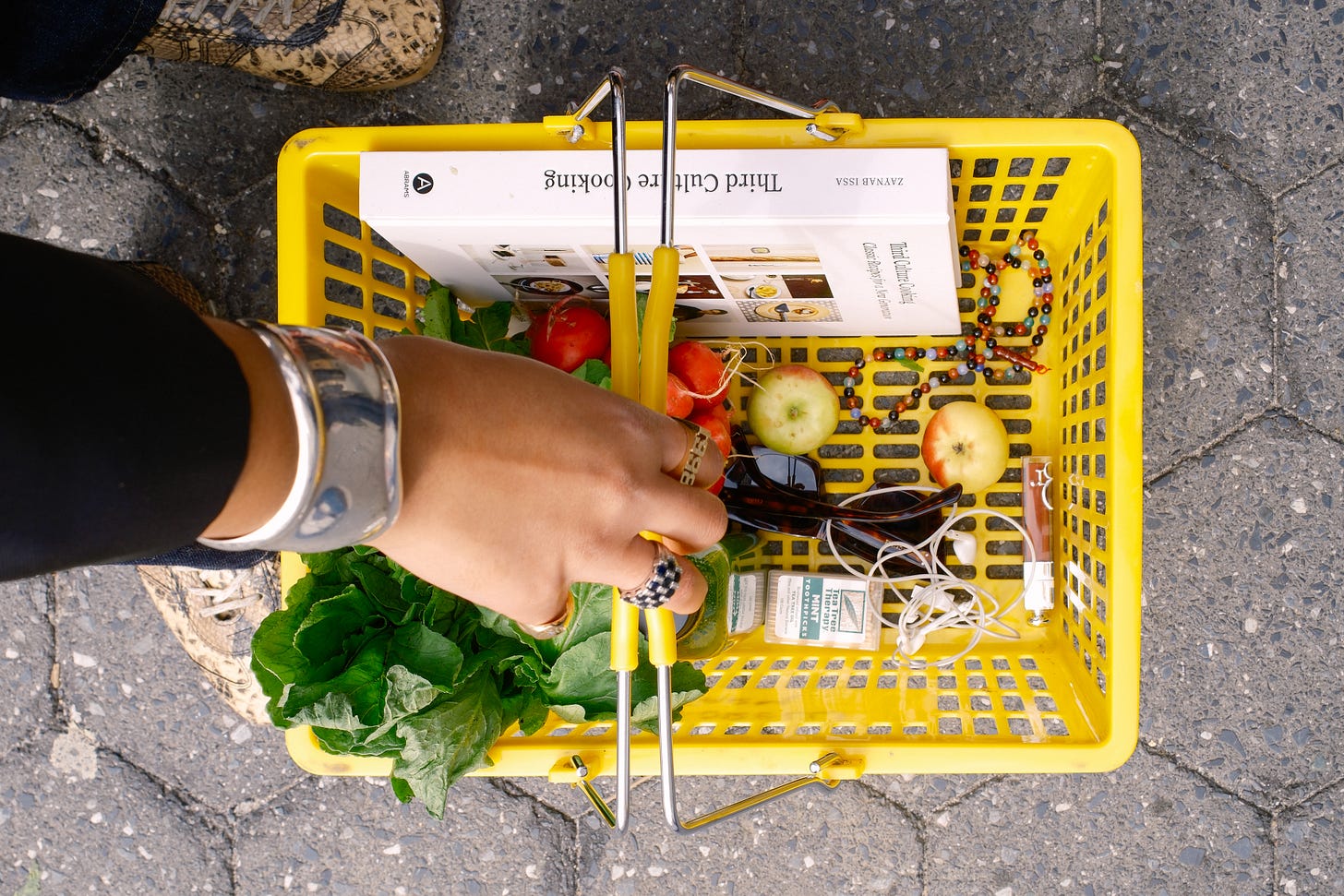
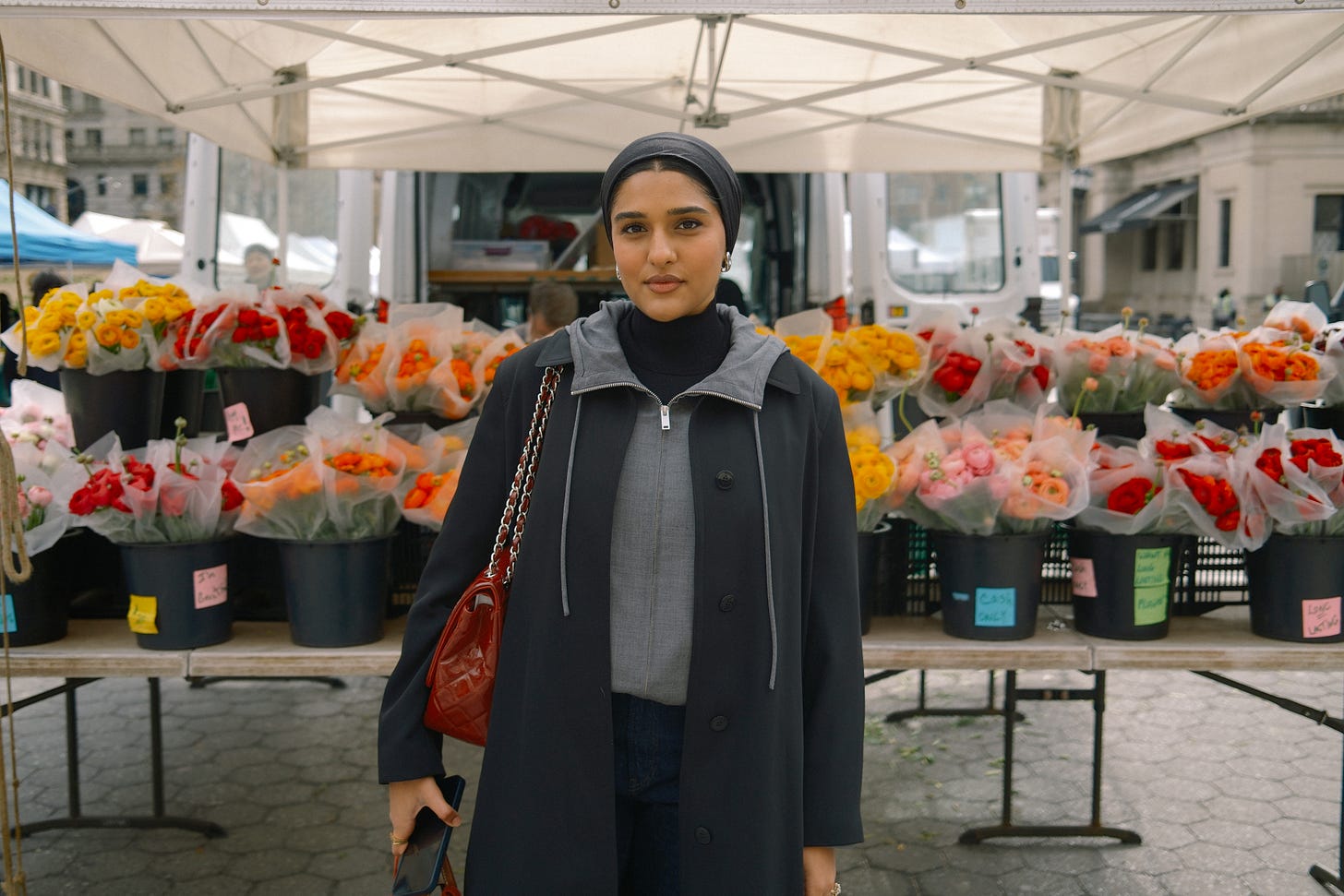
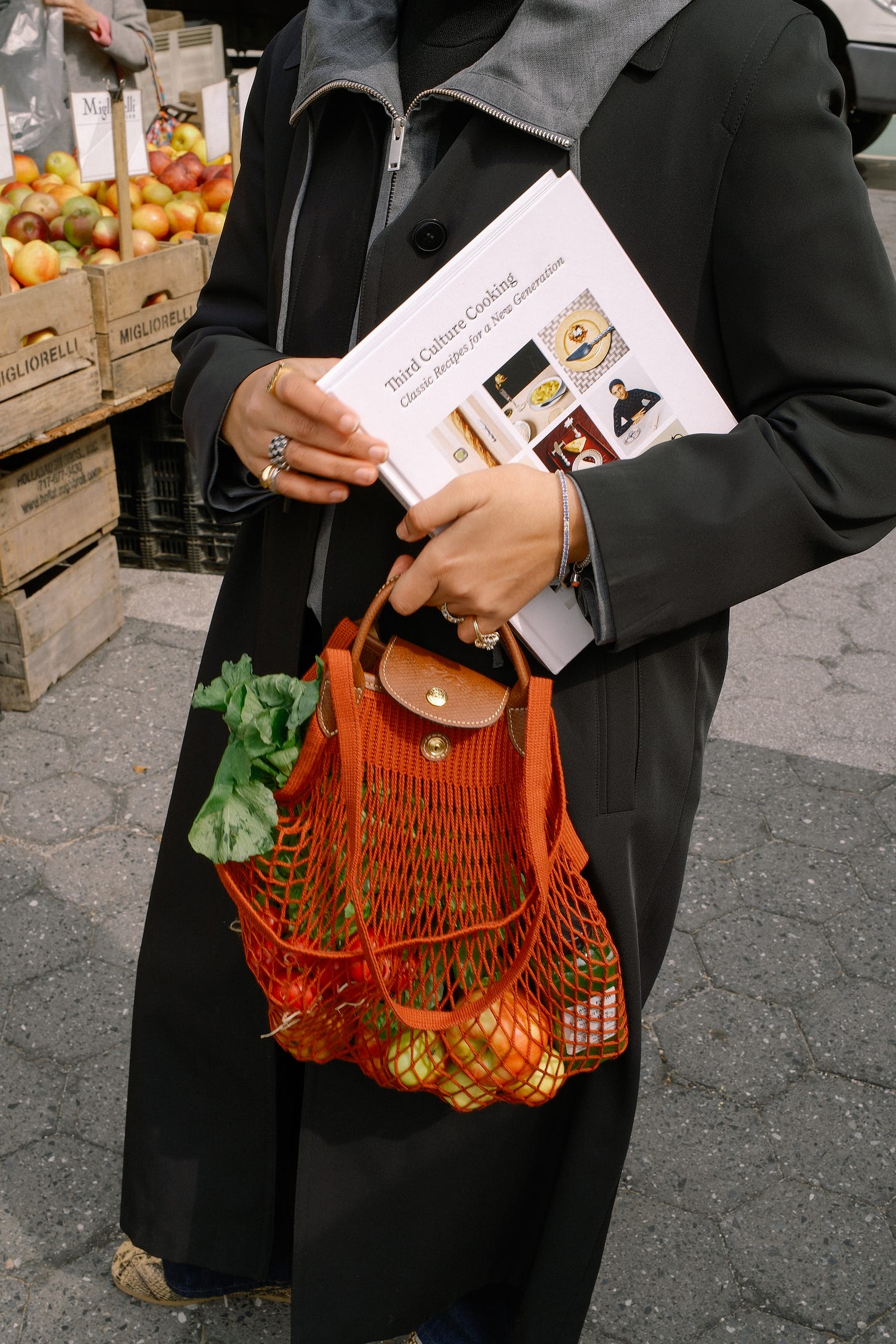
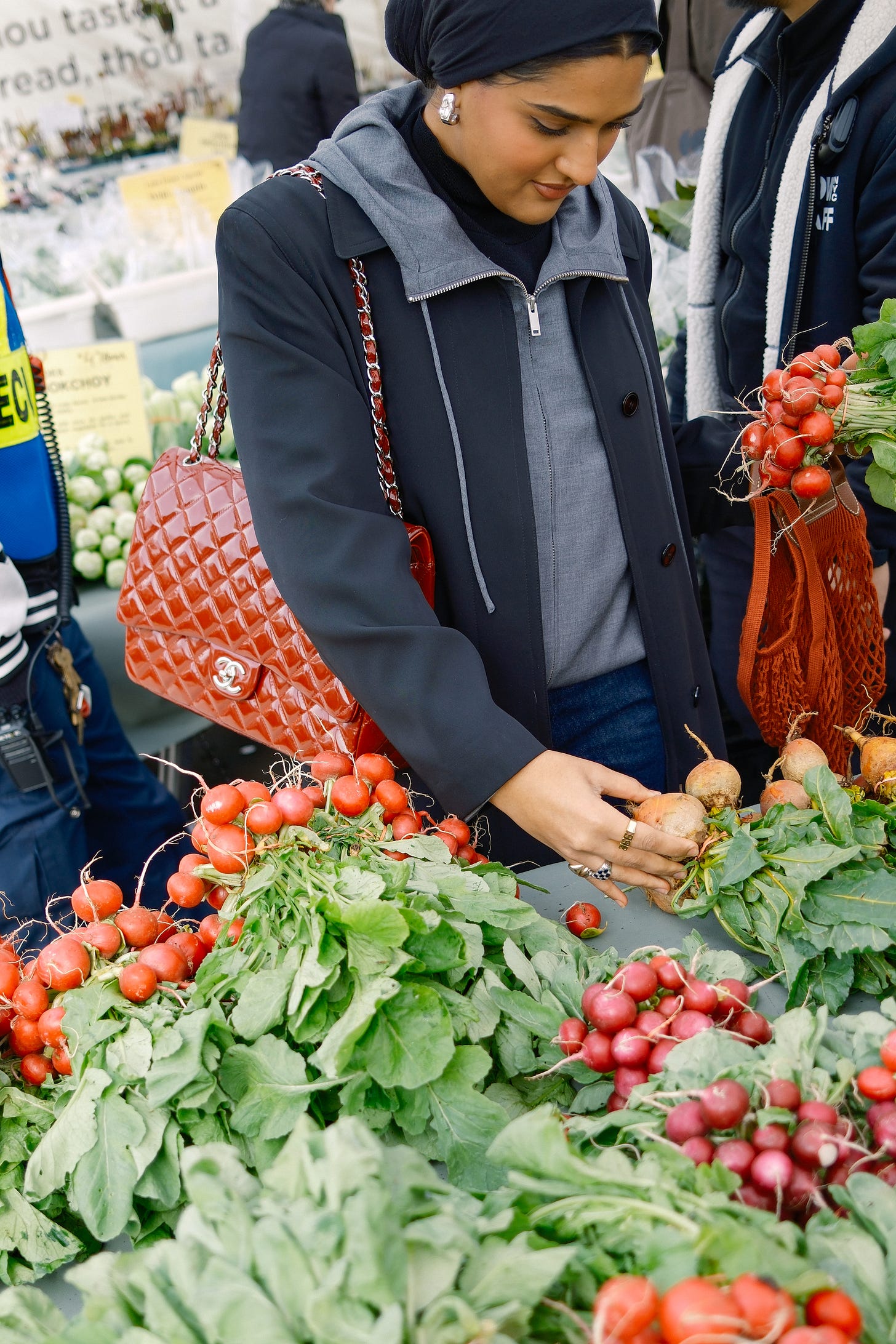
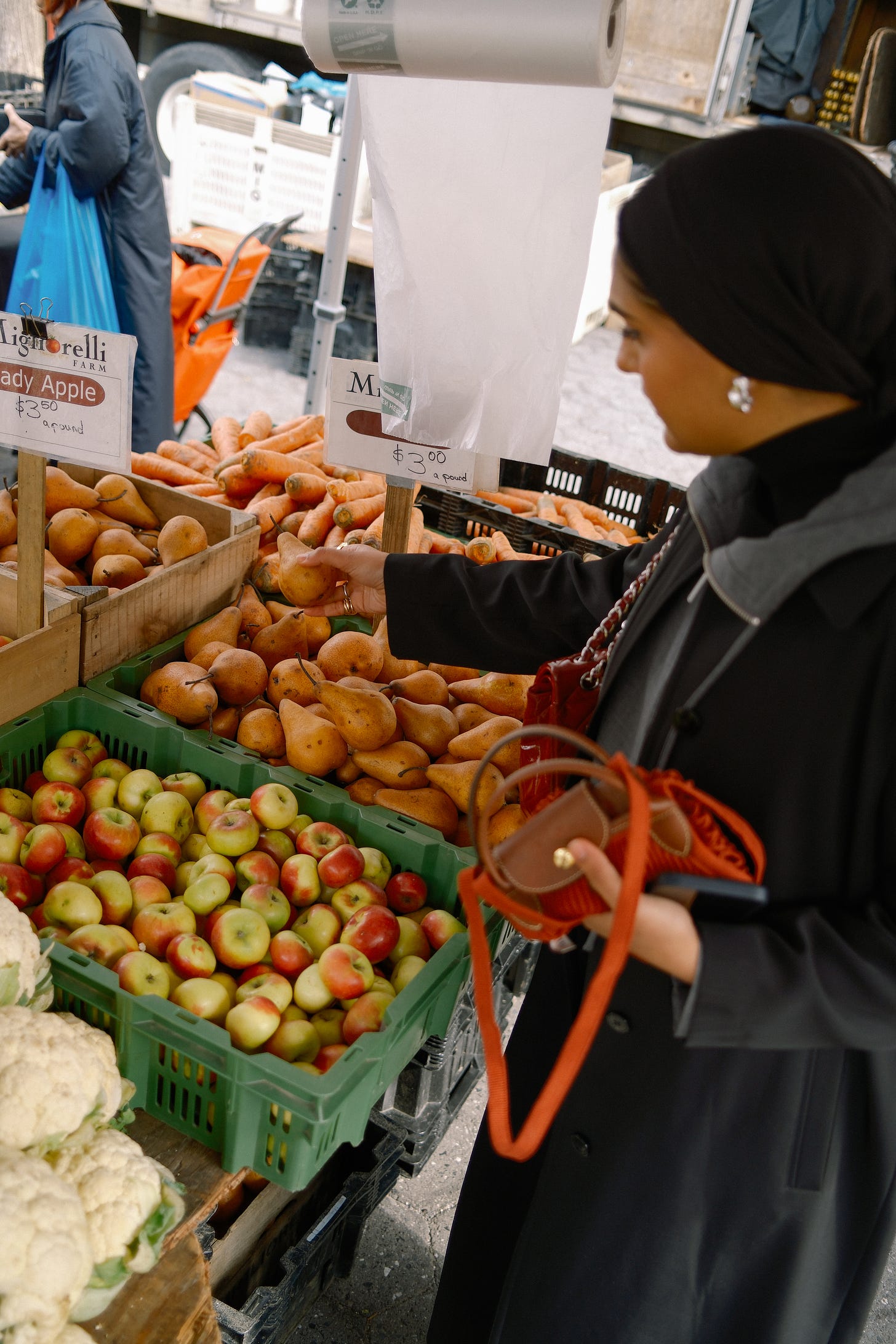
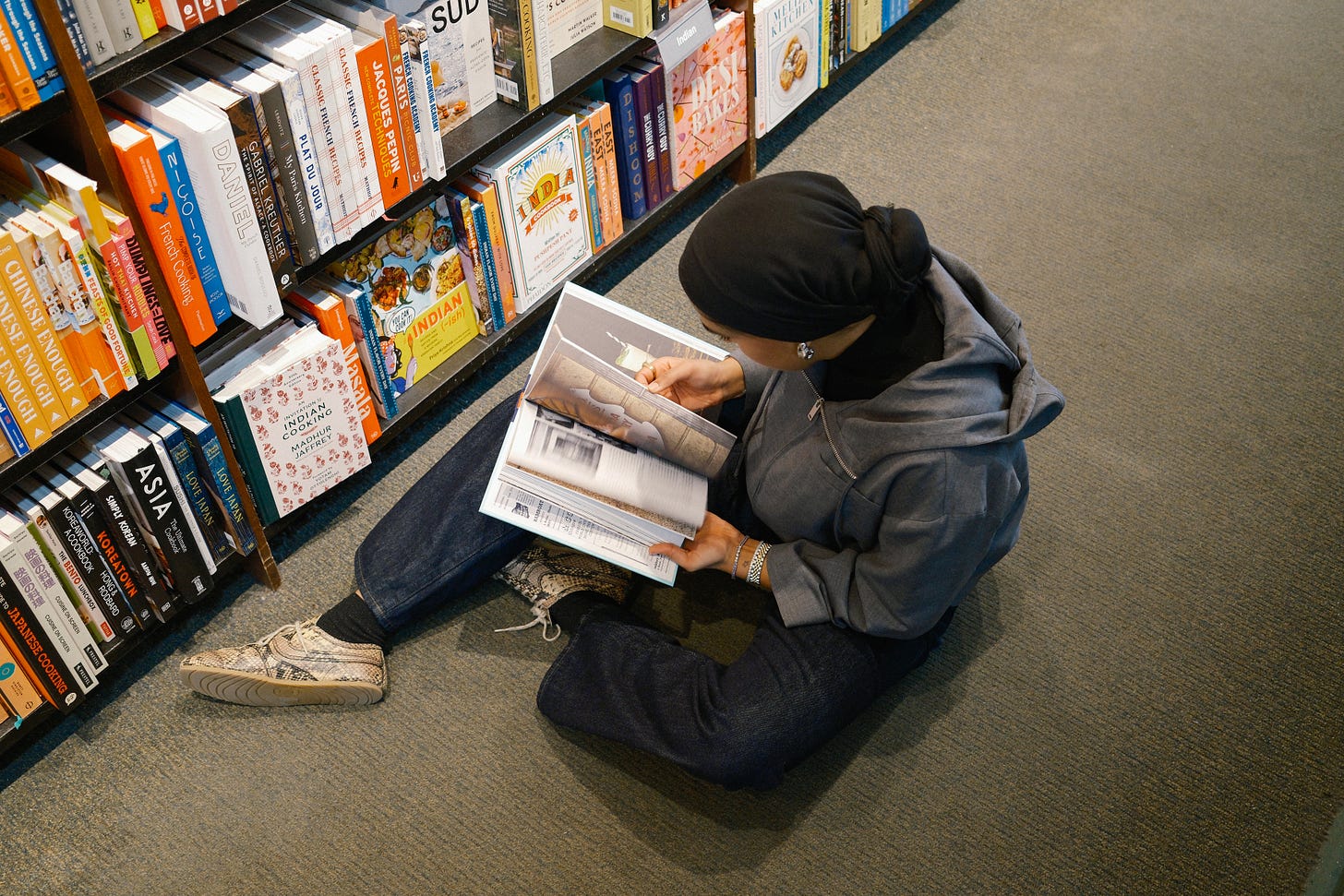

Savored.Every.Word. Such a beautiful and thoughtful conversation!
Such a pleasure chatting with you as usual, Masooma!